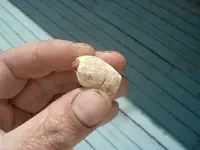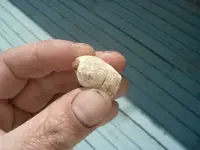romeo-1
Gold Member
- Joined
- Jul 29, 2005
- Messages
- 9,859
- Reaction score
- 7,118
- Golden Thread
- 3
- Location
- Romeotopia
- 🥇 Banner finds
- 3
- Primary Interest:
- All Treasure Hunting
I have found a couple of these minieballs recently with a wooden plug in the nose. Can anyone shed some light on why they would have this plug? They are .577 calibre Snider Enfield bullets. Thanks for the insight!







 In the link above, the article states the clay plugs were soaked in beeswax. Maybe they did the same with the wood?
In the link above, the article states the clay plugs were soaked in beeswax. Maybe they did the same with the wood?